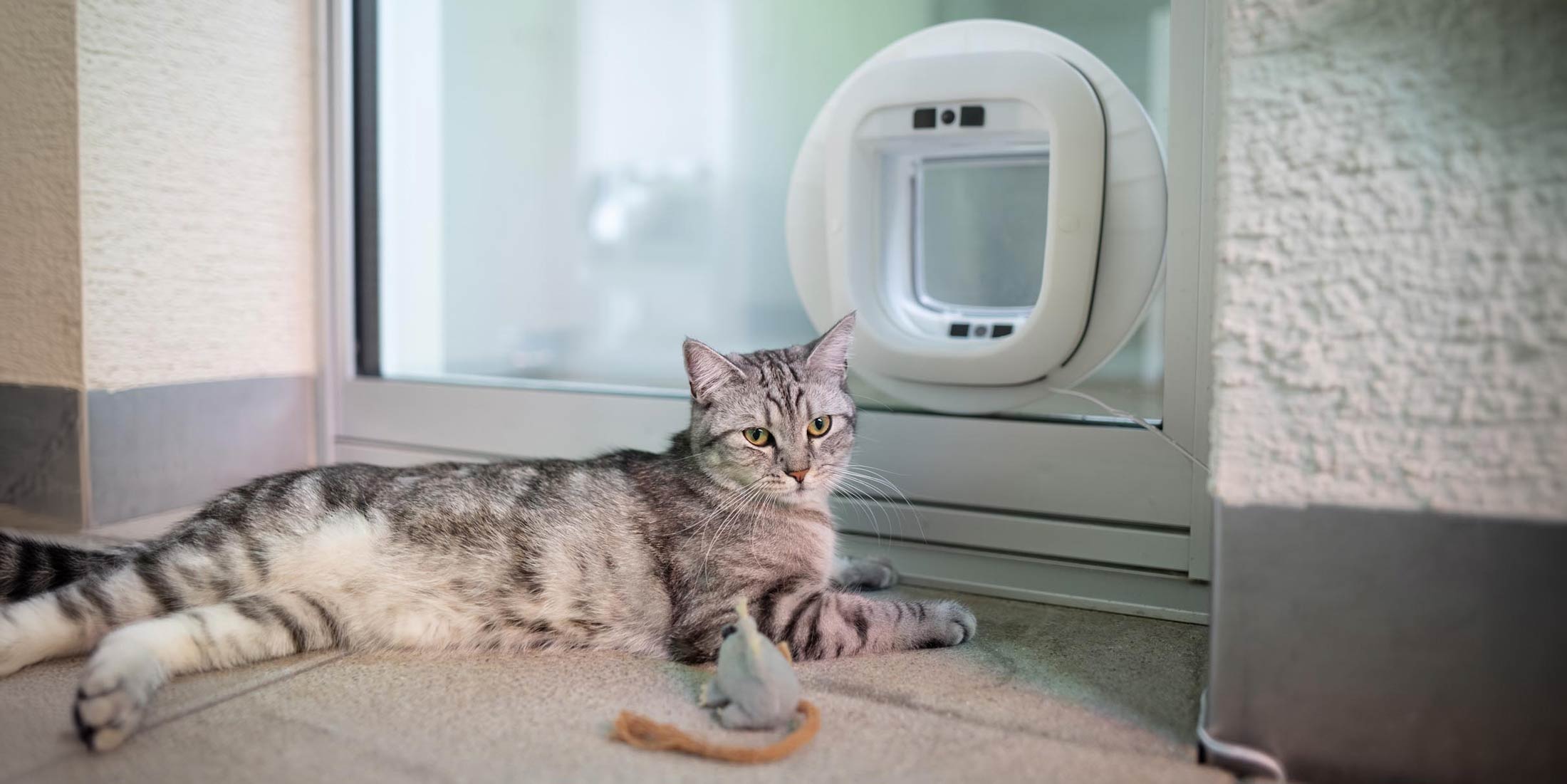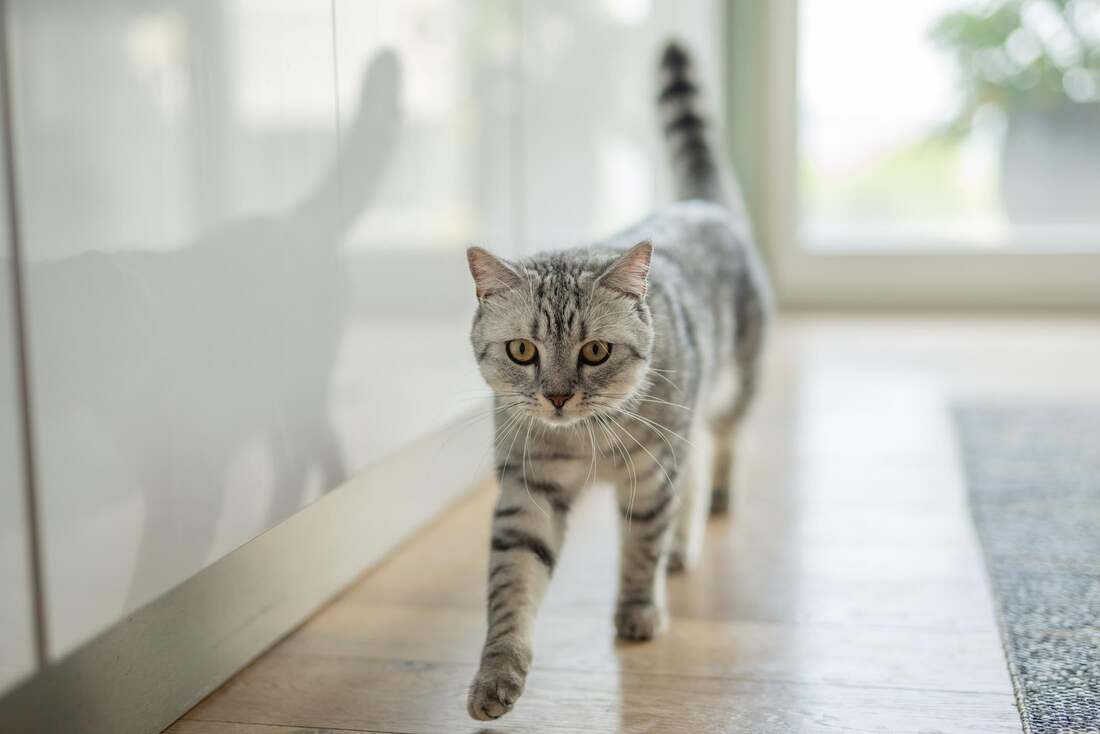Have you ever wondered when your European Shorthair cat will reach adulthood? It is important to know the right time to avoid unexpected surprises.
European shorthair cats typically reach sexual maturity at around 6 months of age. In this blog post, we delve deeper into the world of European shorthair cats and explain how you can recognize the signs of sexual maturity, what happens during mating season, and how you can support your cat during this important phase.
Age and Signs of Sexual Maturity in European Shorthair Cats

European Shorthair cats, often affectionately referred to as EKH, usually reach sexual maturity between six and ten months of age. However, this period can vary depending on the individual development and health of the cat. It is important to pay attention to the first signs of sexual maturity in order to be able to react appropriately. These signs can be both physical and behavioral.
One of the clearest signs that a European shorthair cat is reaching sexual maturity is behavior. Female cats may start to meow louder and more frequently and show noticeable rolling behavior on the floor to signal their readiness to mate. Male cats, on the other hand, may mark with urine, which is often interpreted as an attempt to secure their territory and attract females. Other signs include:
- Increased affection or aggressiveness.
- Changes in eating behavior.
- Possible attempts to escape from the house.
Knowing the exact age at which European shorthair cats reach sexual maturity is crucial to avoid unwanted offspring and to protect your cat's health. It is advisable to speak to a veterinarian about appropriate measures such as neutering as soon as the first signs of sexual maturity are apparent. This will help to minimize the risk of behavioral problems and ensure a harmonious coexistence with your cat.
Mating Behavior of European Shorthair Cats

During mating season, European shorthair cats display a significantly changed behavior that can be stressful for both cat owners and the cats themselves. Female cats in heat often meow louder and more piercingly than usual to attract male cats. They also display a pronounced rolling behavior in which they throw themselves on the ground and roll, which is considered a sign of their readiness to mate.
Male cats, on the other hand, often begin marking their territory by spraying urine during mating season, which can cause problems indoors. When a male cat senses a female in heat, his behavior can become particularly intense. He may try to follow the scent and may also display aggressive behavior toward other male cats that are seen as rivals.
The reproductive cycle of European shorthair cats
The reproductive cycle of European shorthair cats is closely linked to the seasons and the length of daylight. Heat occurs mainly in spring, when the days become longer. A heat can last about a week, but the cat is only really ready to mate for about four days. If she is not mated during this time, the heat ends and can start again after about three weeks.
The cycle includes several phases:
- Proestrus : The preparatory phase in which the cat is not yet ready to mate.
- Estrus : The actual heat in which the cat is ready to mate.
- Metestrus : The phase after heat.
- Anestrus : The resting phase during which no sexual activity occurs.
Details on mating in European shorthair cats
Mating in European shorthair cats often begins with intensive courting attempts by the tomcat, who tries to persuade the cat with special sounds and gestures. Interestingly, it is the cat that ultimately decides whether and when mating will take place. She signals her readiness by assuming a typical position that allows the tomcat to perform the mating.
The actual mating is quite quick and can be repeated often to increase the chances of successful fertilization. After mating, it is not uncommon for the male cat to attack the male cat, a behavior that is interpreted as a defensive reaction to the pain caused by mating. This behavior can be surprising and worrying for first-time cat owners, but it is a normal part of mating behavior in cats.
Stress Reduction in Sexually Mature European Shorthair Cats

Sexually mature European shorthair cats may experience increased stress due to hormonal changes and the increased need to mark and defend their territory. To minimize stress during this stage of life, it is important to create a calm and safe environment. Here are some effective methods:
- Providing sufficient resources : Make sure there is enough food, water, litter boxes and places to retreat to avoid conflict.
- Environmental enrichment : Offer a variety of toys and climbing structures to keep the cat busy and distracted.
- Regular routine : Keep feeding and play times consistent to provide security through predictability for your cat.
In addition to adjusting the environment, special nutritional supplements can also help stabilize the emotional state of cats. Products containing natural calming ingredients such as valerian or lemon balm can help reduce nervousness without sedating the cats. However, it is important to use such products in consultation with a veterinarian to ensure that they are suitable for your pet and do not have negative interactions with other medications. In addition, in severe cases, behavioral therapy can be considered to improve your cat's well-being and quality of life in the long term. Such therapies should always be carried out by a qualified animal behaviorist.
Castration of European Shorthair Cats: When and Why?
Neutering is an important step in the care of a European shorthair cat, especially when it reaches sexual maturity. This surgical procedure removes the reproductive organs, which prevents the cats from producing unwanted offspring. The reasons for neutering are varied, but the main purpose is to prevent cats from reproducing uncontrollably. This is especially important for outdoor cats, who have access to the outdoors and can therefore easily meet other sexually mature cats. Neutering can also help minimize certain behavioral problems that accompany sexual maturity, such as aggressive territorial behavior or urine marking.
In addition to behavioral control, neutering also offers significant health benefits. Neutered cats have a lower risk of developing certain cancers or reproductive diseases. Other benefits include:
- A higher life expectancy compared to non-neutered cats.
- Reducing the likelihood that the cat might run away or get lost because the urge to seek out a mate is reduced.
- Reduced risk of transmission of infectious diseases that can be spread through mating behavior.
The decision to spay or neuter should ideally be made before the cat experiences her first heat, which usually occurs around six months of age. It is advisable to discuss this procedure with an experienced veterinarian who can recommend the best course of action for your particular cat.
Protect your home and your cat with Flappie
When your European shorthair cat reaches sexual maturity, unexpected challenges may arise, especially when they start exploring their surroundings and may bring prey home. This is where Flappie comes in - a smart cat flap specifically designed to keep your home clean and safe. The flap has a camera with AI technology that can detect whether your cat is returning alone or with prey. If the cat tries to come into the house with prey, the flap will stay closed. This not only protects your home from unwanted guests such as mice or birds, but also ensures that your cat can roam outside safely and without risk. The benefits of Flappie are clear:
- Selective access control prevents loot from entering the house.
- Prey detection by camera equipped with AI technology.
- An app that allows you to control the cat flap remotely, with notifications and insights into your cat's life.
Using the Flappie app gives you added convenience and control. You'll receive real-time notifications when your cat uses the flap and can control the flap remotely. This is especially useful for owners of free-roaming cats as it allows them to control access to the cat flap even when they're not home. Installing Flappie is easy and safe, and you don't have to worry about damaging your walls or doors. Here are some of the things that make Flappie special:
- State-of-the-art technology : A camera detects the prey and controls access.
- Convenience with the Flappie app : Easily manage settings and notifications via the app.
- Data protection is a top priority , as no data is passed on to external servers. Visit the website at https://flappie.ch and discover how this intelligent cat flap can revolutionize living with your cat by ensuring a clean and controlled home without restricting your cat's freedom.
Frequently Asked Questions
How do you notice sexual maturity in cats?
Sexual maturity in cats can be recognized by various signs. In female cats, this is expressed by loud and frequent meowing and noticeable rolling on the floor to signal their readiness to mate. Male cats often begin to mark their territory with urine. Other signs include increased affection or aggressiveness, changes in eating behavior and possible attempts to escape from the house.
At what age do most cats reach sexual maturity?
Most European shorthair cats typically reach sexual maturity between six and ten months of age. However, this can vary depending on the cat's individual development and health.





Share:
Comprehensive Guide to the Characteristics of the BKH Cat
Traditional Persian Cat: A Comprehensive Guide